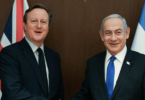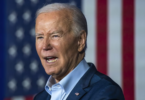F.P. Report
WASHINGTON: The U.S. Department of State, Bureau of Democracy, Human Rights and Labor (DRL) announces an open competition for organizations interested in submitting applications for projects that prevent and mitigate violence during Kenya’s 2022 electoral cycle.
DRL’s goal is to support efforts by Kenyan stakeholders to prevent and mitigate violence during the 2022 electoral cycle. DRL’s objectives are to strengthen the ability of the Kenyan government, civil society, religious, and private sector bodies to implement sustainable violence mitigation measures that enable the Kenyan electorate to vote in peaceful and credible elections.
Kenya plans to hold national elections in August 2022. The most recent presidential election in 2017 included contested results, a court-mandated repeat of the presidential election, and violence in both the pre- and post-electoral period. Strong conflict mitigation mechanisms are vital to prevent a repeat of prior electoral violence, promote peace and stability, and strengthen democratic institutions.
Following the 2017 election, the Kenyan government launched the Building Bridges Initiative (BBI) to foster an environment for more peaceful elections in 2022. However, disagreements over BBI’s resulting proposed constitutional amendments have increased political tensions and the perceived stakes of the 2022 poll. Several by-elections in March 2021 suffered electoral violence, including attacks against IEBC officials at polling centers. Misinformation and hate speech, particularly on social media, also remain issues.
To address these challenges, civil society organizations continue to advocate for the government to implement electoral reforms recommended following prior elections, including on electoral dispute resolution, and strengthen the ability of the Independent Electoral and Boundaries Commission, which is operating with only three out of seven commissioners, to manage credible elections.
To respond to these challenges, applicants should submit proposals for programs to prevent and mitigate violence in Kenya’s 2022 electoral cycle.
Illustrative program priorities can include, but are not limited to:
Mechanisms to proactively mitigate and prevent election-related violence are strengthened.
Citizens, candidates, and parties are aware of peaceful electoral dispute resolution mechanisms – both formal and informal – and use those mechanisms.
Political parties, candidates and their supporters commit to a peaceful electoral process, particularly during party primaries.
Innovative efforts to detect and counter the online spread of misinformation and hate speech are developed and implemented.
Avenues for peaceful dialogue between political parties and/or citizens are increased and strengthened.
Electoral violence early warning/early response (EWER) mechanisms to identify hotspots and proactively respond to violence are enhanced.
A mechanism to address election-related gender-based violence and violence against women candidates is in place.
The Kenyan electorate is informed of the importance of voting and peaceful elections.
Kenyan state and non-state stakeholders have the capacity to peacefully mitigate electoral violence during the pre-election phase, on election day, and post-election.
Kenyan state and non-state actors strengthen electoral violence mitigation frameworks, including clearly delimitating electoral violence mitigation roles and responsibilities among stakeholders.
Kenyan security stakeholders have increased understanding of their roles and responsibilities during the electoral cycle, including their obligation to protect human rights and the right to vote.
Mechanisms for holding state agencies, including security organs, accountable are strengthened.
Polling staff, security providers, candidates, and other stakeholders commit to ensuring electoral security and have an increased understanding of their roles and responsibilities in preventing and mitigating conflict.
Proposals should clearly delineate how activities will correspond to each stage of the electoral cycle (pre-election, Election Day, and post-election). Applicants should demonstrate an understanding of how activities will coordinate and deconflict with existing initiatives, including those supported by the U.S. government, in the election support field.
All programs should aim to have impact that leads to reforms and should have the potential for sustainability beyond DRL resources. DRL’s preference is to avoid duplicating past efforts by supporting new and creative approaches. This does not exclude from consideration projects that improve upon or expand existing successful projects in a new and complementary way.
Programs should seek to include groups that can bring perspectives based on their religion, gender, disability, race, ethnicity, and/or sexual orientation and gender identity. Programs should be demand-driven and locally led to the extent possible. DRL requires all programs to be non-discriminatory and expects implementers to include strategies for integration of individuals/organizations regardless of religion, gender, disability, race, ethnicity, and/or sexual orientation and gender identity.
Where appropriate, competitive proposals may include:
- Opportunities for beneficiaries to apply their new knowledge and skills in practical efforts;
- Solicitation of feedback and suggestions from beneficiaries when developing activities in order to strengthen the sustainability of programs and participant ownership of project outcomes;
- Input from participants on sustainability plans and systematic review of the plans throughout the life of the project, with adjustments made as necessary;
Inclusion of vulnerable populations;
Joint identification and definition of key concepts with relevant stakeholders and stakeholder input into project activities;
Systematic follow up with beneficiaries at specific intervals after the completion of activities to track how beneficiaries are retaining new knowledge as well as applying their new skills.
Activities that are not typically allowed include, but are not limited to:
The provision of humanitarian assistance;
English language instruction;
Development of high-tech computer or communications software and/or hardware;
Purely academic exchanges or fellowships;
- External exchanges or fellowships lasting longer than six months;
- Off-shore activities that are not clearly linked to in-country initiatives and impact or are not necessary per security concerns;
- Theoretical explorations of human rights or democracy issues, including projects aimed primarily at research and evaluation that do not incorporate training or capacity-building for local civil society;
- Micro-loans or similar small business development initiatives;
- Initiatives directed towards a diaspora community rather than current residents of targeted countries.
- This notice is subject to availability of funding.
B. Federal Award Information
The U.S. government may (a) reject any or all applications, (b) accept other than the lowest cost application, (c) accept more than one application, and (d) waive irregularities in applications received.
The U.S. government may make award(s) on the basis of initial applications received, without discussions or negotiations. Therefore, each initial application should contain the applicant’s best terms from a cost and technical standpoint. The U.S. government reserves the right (though it is under no obligation to do so), however, to enter into discussions with one or more applicants in order to obtain clarifications, additional detail, or to suggest refinements in the project description, budget, or other aspects of an application.
DRL anticipates awarding either a grant or cooperative agreement depending on the needs and risk factors of the program. The final determination on award mechanism will be made by the Grants Officer. The distinction between grants and cooperative agreements revolves around the existence of “substantial involvement.” Cooperative agreements require greater Federal government participation in the project. If a cooperative agreement is awarded, DRL will undertake reasonable and programmatically necessary substantial involvement. Examples of substantial involvement can include, but are not limited to:
- Active participation or collaboration with the recipient in the implementation of the award.
- Review and approval of one stage of work before another can begin.
- Review and approval of substantive provisions of proposed subawards or contracts beyond existing Federal policy.
- Approval of the recipient’s budget or plan of work prior to the award.
The authority for this funding opportunity is found in the Foreign Assistance Act of 1961, as amended (FAA).
To maximize the impact and sustainability of the award(s) that result from this NOFO, DRL retains the right to execute non-competitive continuation amendment(s). The total duration of any award, including potential non-competitive continuation amendments, shall not exceed 60 months, or five years. Any non-competitive continuation is contingent on performance and pending availability of funds. A non-competitive continuation is not guaranteed and the Department of State reserves the right to exercise or not to exercise this option.
C. Eligibility Information
For application information, please see the proposal submission instructions (PSI) on our website.
C.1 Eligible Applicants
DRL welcomes applications from U.S.-based and foreign-based non-profit organizations/nongovernment organizations (NGO) and public international organizations; private, public, or state institutions of higher education; and for-profit organizations or businesses. DRL’s preference is to work with non-profit entities; however, there may be some occasions when a for-profit entity is best suited.
Applications submitted by for-profit entities may be subject to additional review following the panel selection process. Additionally, the Department of State prohibits profit to for-profit or commercial organizations under its assistance awards. Profit is defined as any amount in excess of allowable direct and indirect costs. The allowability of costs incurred by commercial organizations is determined in accordance with the provisions of the Federal Acquisition Regulation (FAR) at 48 CFR 30, Cost Accounting Standards Administration, and 48 CFR 31 Contract Cost Principles and Procedures.
C.2 Cost Sharing or Matching
Providing cost sharing, matching, or cost participation is not an eligibility factor or requirement for this NOFO, and providing cost share will not result in a more favorable competitive ranking.
C.3 Other
Applicants should have existing, or the capacity to develop, active partnerships with thematic or in-country partners, entities, and relevant stakeholders, including private sector partners and NGOs, and have demonstrable experience in administering successful and preferably similar projects. DRL encourages applications from foreign-based NGOs headquartered in the geographic regions/countries relevant to this NOFO.
Applicants may form consortia in order to bring together organizations with varied expertise to propose a comprehensive program in one proposal. However, one organization should be designated in the proposal as the lead applicant, with the other members designated as sub-award partners. DRL reserves the right to request additional background information on applicants that do not have previous experience administering federal grant awards, and these applicants may be subject to limited funding on a pilot basis.
DRL is committed to an anti-discrimination policy in all of its projects and activities. DRL welcomes applications irrespective of race, ethnicity, color, creed, national origin, gender, sexual orientation, gender identity, disability, or other status.
Any applicant listed on the Excluded Parties List System in the System for Award Management (SAM.gov) (www.sam.gov) and/or has a current debt to the U.S. government is not eligible to apply for an assistance award in accordance with the OMB guidelines at 2 CFR 180 that implement Executive Orders 12549 (3 CFR,1986 Comp., p. 189) and 12689 (3 CFR,1989 Comp., p. 235), “Debarment and Suspension.” Additionally, no entity or person listed on the Excluded Parties List System in SAM.gov can participate in any activities under an award. All applicants are strongly encouraged to review the Excluded Parties List System in SAM.gov to ensure that no ineligible entity or person is included in their application.
D. Application and Submission Information
D.1 Address to Request Application Package
Applicants can find application forms, kits, or other materials needed to apply on www.grants.gov and SAMS Domestic (https://mygrants.servicenowservices.com) under the announcement title “DRL Supporting Peaceful Elections in Kenya,” funding opportunity number “SFOP0007583.” Please contact the DRL point of contact listed in Section G if requesting reasonable accommodations for persons with disabilities or for security reasons. Please note that reasonable accommodations do not include deadline extensions.
D.2 Content and Form of Application Submission
For all application documents, please ensure:
All documents are in English and all costs are in U.S. dollars. If an original document within the application is in another language, an English translation must be provided (please note the Department of State, as indicated in 2 CFR 200.111, requires that English is the official language of all award documents. If any document is provided in both English and a foreign language, the English language version is the controlling version);
All pages are numbered, including budgets and attachments;
All documents are formatted to 8 ½ x 11 paper; and,
All documents are single-spaced, 12 point Times New Roman font, with 1-inch margins. Captions and footnotes may be 10-point Times New Roman font. Font sizes in charts and tables, including the budget, can be reformatted to fit within 1 page width.
D.2.1 Application Requirements
Complete applications must include the following:
Completed and signed SF-424, SF-424A, and SF-424B forms. Please see SF-424 instructions in Section 2B of the PSI.
If your organization engages in lobbying the U.S. government, including Congress, or pays another entity to lobby on your behalf, the SF-LLL “Disclosure of Lobbying Activities” form is also required (only if applicable). Please see SF-LLL guidance in Section 2B of the PSI.
Cover Page (not to exceed one (1) page, preferably as a Word Document) that includes a table with the organization name, project title, target country/countries, project synopsis, and name and contact information for the application’s main point of contact. Please see Cover Page Section 2C of the PSI for a template and more details.
Executive Summary (not to exceed one (1) page, preferably as a Word Document) that outlines project goals, objectives, activities, etc.
The Executive Summary should include a brief section that explicitly states (1) the problem statement addressed by the project, (2) research-based evidence justifying the unique project approach, and (3) quantifiable project outcomes and impacts.
Table of Contents (not to exceed one (1) page, preferably as a Word Document) listing all documents and attachments with page numbers.
Proposal Narrative (not to exceed ten (10) pages, preferably as a Word Document). Please note the ten-page limit does not include the Cover Page, Executive Summary, Table of Contents, Attachments, Detailed Budget, Budget Narrative, Audit, or NICRA. Applicants are encouraged to combine multiple documents in a single Word Document or PDF (i.e. Cover Page, Table of Contents, Executive Summary, and Proposal Narrative in one file). Please see Proposal Narrative Guidelines in Section 2F of the PSI for more details.
The Proposal Narrative should demonstrate the Applicant’s commitment to ensuring the participation of all people as a strategy for implementation. Please integrate inclusion strategies in all sections of the Proposal Narrative to enhance programmatic impact.
Budget (preferably as an Excel workbook) that includes three (3) columns containing the request to DRL, any cost sharing contribution, and the total budget. A summary budget should also be included using the OMB-approved budget categories (see SF-424A as a sample) in a separate tab. Costs must be in U.S. dollars. Detailed line-item budgets for subgrantees should be included as additional tabs within the Excel workbook (if available at the time of submission). Please see Budget Guidelines Section 2G of the PSI for more information.
The programming approach should be dedicated to strengthening inclusive societies as a necessary pillar of strong democracies. Please include costs associated with this commitment in the budget and budget narrative.
Budget Narrative (preferably as a Word Document) that includes substantive explanations and justifications for each line item in the detailed budget spreadsheet, as well as the source and a description of all cost-share offered. Please see Budget Guidelines Section 2G of the PSI for more information.
Your organization’s most recent audit, if applicable. This should be a single audit, program-specific audit, or other audit in accordance with Generally Accepted Government Auditing Standards (GAGAS). Please see Audit Section 2H of the PSI for more information.
Logic Model (preferably as a Word Document). Please see Logic Model Section 2I of the PSI for more information.
Monitoring and Evaluation Narrative (not to exceed four (4) pages, preferably as a Word Document). Please see Monitoring and Evaluation Narrative Section 2J of the PSI for more information.
As stated within the DRL Guide to Program Monitoring and Evaluation (p. 6): DRL strongly encourages applicants to consider whether their monitoring and evaluation systems are utilizing human rights-based approaches, applying a gender and equity lens, or include the participation of sub-grantees and project participants. Within the Monitoring and Evaluation Narrative, applicants should demonstrate their commitment to inclusive strategies and consider whether evaluation design, data collection, analysis, reporting and learning are conducted in an ethical and responsible way with all project participants (e.g. direct beneficiaries, sub-grantees). Applicants should still make adequate provisions to protect the privacy of human subjects when collecting data from individuals. For instance, when collecting data from project participants, consider whether your organization will have the necessary informed consent forms, confidentiality agreements, and data security protocols.
Monitoring and Evaluation Plan (preferably as a Word Document or Excel Sheet). Please see Monitoring and Evaluation Plan Section 2J of the PSI for more information.
Risk Analysis (preferably as a Word Document). Please see Risk Analysis Section 2K of the PSI for more information.
Key Personnel (not to exceed two (2) pages, preferably as a Word Document). Please include short bios that highlight relevant professional experience. Given the limited space, CVs are not recommended for submission.
Timeline (not to exceed one (1) page, preferably as a Word Document or Excel Sheet). The timeline of the overall proposal should include activities, evaluation efforts, and program closeout.
Gender Analysis (not to exceed three (3) pages, preferably as a Word Document) that identifies and examines the relevance of gender norms and power relations in target countries and addresses how the organization will account for these dynamics throughout program design and implementation. The analysis should consider institutional practices and barriers, cultural norms, gender roles, access to and control over assets and resources, and patterns of decision-making. In conflict settings, the gender analysis should examine how gender norms interact with other factors to drive or mitigate conflict, the differential impact of conflict on women and men, and an understanding of the roles of women and men in conflict, peacebuilding, and transitional processes. A set of guiding questions can be found in Section L of the PSI.
Security Plan addressing any issues involving in-person events and recruitment for said events, and safety for any online programs or communications, including independent IT security audits (to include a vulnerability assessment) of any proposed web application or platform. Organization’s security plan should demonstrate consideration of the risks identified in the submitted risk assessment. Costs may also be identified within the budget and budget narrative. Applicants are also encouraged to include contingency plans for in-person or online activities.
Contingency Plan for proposed activities should the originally planned activities not be able to be implemented. The contingency plan should be submitted as an additional annex. Applicants should demonstrate consideration of the risks identified in the submitted risk assessment and include specific alternative activities or locations as part of the contingency plan. Any proposed “plan” must comply with 2CFR200.433 – Contingency provisions. Plans must not include unallocable or unallowable expenses, and must not result in a larger Total Award Value than the identified as the “competition ceiling.” DRL requires prior approval by the Grants Officer of the “plan” before any activities can take place, or costs can be incurred against the “plan.”
Lessons Learned (not to exceed one (1) page, preferably as a Word Document) from past programs (insert country or theme) that demonstrate how the implementer has safely operated and responded to programmatic challenges, learning from both successes and failures, in the operating environment. To be incorporated into the ten (10) pages allowed for “Proposal Narrative.”
Applications that do not include the elements listed above will be deemed technically ineligible.
D.2.2 Additional Application Documents
Strong applications will also contain the following:
Individual Letters of Support and/or Memorandum of Understanding. Letters of support and MOUs must be specific to the project implementation (e.g. from proposed partners or sub-award recipients) and will not count towards the page limit.






